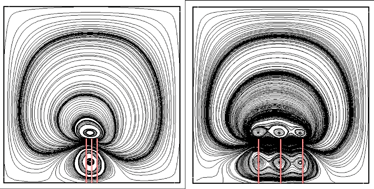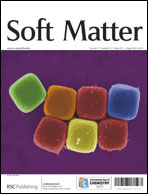In a microfluidic device, cilia are good candidates to generate complex flow in solution by stirring the microscale fluid. To realize the potential as a novel microfluidic system, it is essential to understand the resonant behavior of cilia in solution and optimize the performance of a cilia-based device. In this paper, the resonant behavior of polydimethylsiloxane (PDMS) cilia in water is investigated by a novel computational method in order to understand the underlying physics and to suggest the optimal design of a cilia-based device. The resonant frequency of a single cilium in water is quantitatively compared to both analytical solutions and experimental results considering an added mass effect. Also, to propose the optimal design of cilia-based device as a microfluidic mixer, the fluid velocity and the pressure in multiple cilia are analysed according to the spacing between neighboring cilia. When the spacing increases from 100 µm to 600 µm, the flow pattern generated by the tips of cilia is changed from a large vortex to multiple small vortexes, which can be utilized for transport, separation and reaction of biomolecules. The particle dispersion with the mixing efficiency in multiple cilia is analysed to predict the performance as a microfluidic device.

You have access to this article
 Please wait while we load your content...
Something went wrong. Try again?
Please wait while we load your content...
Something went wrong. Try again?


 Please wait while we load your content...
Please wait while we load your content...